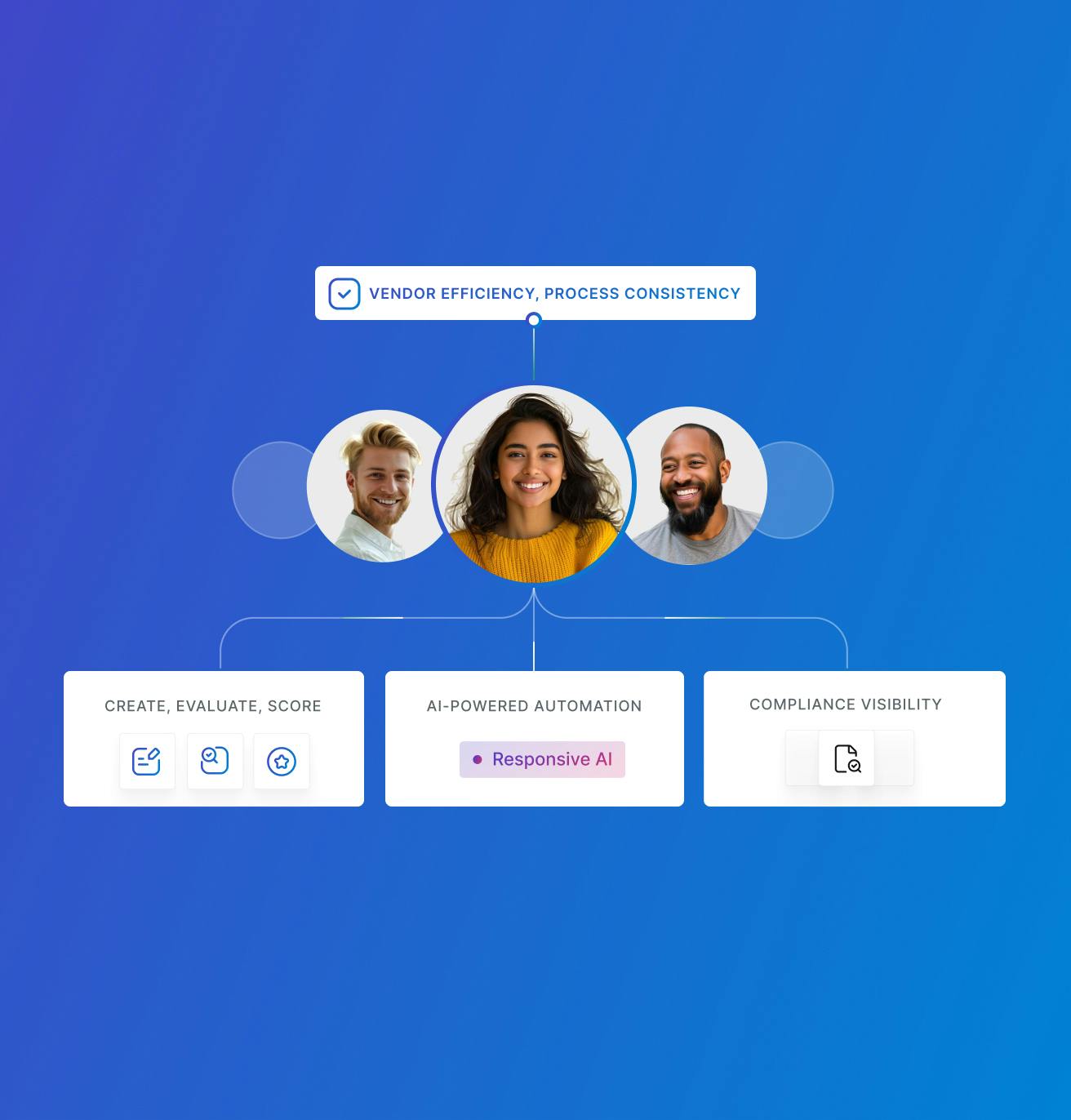Serving on an investment committee comes with significant responsibility. Your decisions directly impact the individuals — participants, members, or beneficiaries — who rely on the fund. As a fiduciary, you are legally and ethically obligated to act in their best interest. For new members, the role may feel daunting, but it’s also uniquely rewarding.
If you’re considering (or newly appointed to) a role on an investment committee, you likely have a few questions. But first, congratulations! You have been entrusted to make important decisions that have the power to improve people’s lives. Whether it be 401(k) participants or foundation beneficiaries, doing research like this shows you’re up for the challenge and taking your responsibility to the group seriously. Certainly, each person impacted appreciates your diligence. So let’s get started.
In this blog, we’ll share what you need to know about investment committees. To start, we’ll answer some background questions like:
- What is an investment committee?
- Who is on it?
- What does it do?
Next, we’ll offer tips and best practices for success. And finally, we’ll share resources, sample investment policy statements, and committee charter examples for further exploration.
Investment committee basics
What is an investment committee?
An investment committee is the group of people responsible for managing an organization’s investments. The committee oversees investment policies, advisor selection, strategy, and fund performance to ensure the best possible outcome for the members or beneficiaries.
What kinds of funds do committees manage?
- Endowments
- Foundation funds
- 401(k) or 403(b) retirement plans
- Pension plans
Why are investment committees important?
Institutional investors have a fiduciary duty to act in the best interest of the organization they represent. By establishing a committee, the organization creates internal checks and balances while benefiting from a variety of perspectives, expertise, and networks. Accordingly, this protects the organization from risk and often improves overall investment performance. Additionally, the committee shares the legal liability rather than making a single person wholly responsible.
Who serves on an investment committee?
The investment committee selection process varies from one organization to another. In private organizations, committee members may be appointed or volunteers. In these organizations, members may include employees from the executive team, HR, legal, and finance.
On the other hand, investment committees in nonprofit organizations often comprise staff and volunteers. Ideally, these members have some financial or investment experience, but it is not required.
Who serves as the investment committee chairperson?
Key attributes of a strong investment committee chairperson or leader include:
- Investment expertise: Strong analytical skills, deep market knowledge, and fluency in financial modeling.
- Strategic vision: Ability to align individual investments with long-term portfolio objectives.
- Risk discipline: Comfortable saying no; upholds diligence standards and risk management protocols.
- Facilitation skills: Keeps meetings efficient, surfaces dissent productively, and guides toward resolution.
- Objectivity: Balances enthusiasm from deal sponsors with independent scrutiny.
How many members are on an investment committee?
Most investment committees have between three and nine members, with the ideal size being five to seven members. This allows for sufficient diversity of thought while maintaining agile decision-making capabilities.
How do investment committees make decisions?
The investment committee decision-making process typically unfolds in a structured sequence that balances analytical rigor with collaborative judgment. It begins with a preliminary screening, where the investment team evaluates potential opportunities and filters for those that meet baseline criteria. Deals that pass this stage are advanced for deeper review, often through informal discussions with committee members to gauge initial interest.
A detailed investment memo is then prepared, serving as the foundation for the committee’s evaluation. This document outlines the market opportunity, competitive landscape, product differentiation, financial projections, management team credentials, valuation, and identified risks. It is designed to both inform and anticipate the questions likely to arise during the committee discussion.
During the formal investment committee meeting, the deal team presents the opportunity, articulates the investment thesis, and defends their analysis. The committee members engage in a rigorous dialogue — challenging assumptions, probing for weaknesses, and assessing alignment with the overall fund strategy. They consider not only potential returns but also risk factors, downside scenarios, and exit pathways.
Decisions are made based on one of two approaches: some committees vote (requiring a majority or unanimous agreement) while others operate by consensus, favoring group alignment without formal ballots. In certain firms, individual members may have veto power, allowing them to block deals that raise red flags.
Ultimately, the process is designed to ensure that every investment undergoes thorough scrutiny, balancing conviction with caution before capital is deployed.
Investment committee duties
Selecting an investment consultant
In most cases, the members of an investment committee don’t have the expertise or time required to manage the organization’s investments in a way that meets the fiduciary requirements. Consequently, they need to select an investment consultant to help guide them.
For a newly formed investment committee, finding a consultant is the first order of business. There are a lot of options, so it’s important to take a data-based approach to selecting the right partner by issuing an investment management RFP.
Using a request for proposal (RFP) enables you to gather information about a firm’s people, processes and approach in an organized and standardized way. Then, your committee can score the RFP and select the consultant that offers the best fee structure, services, and expertise to serve your members’ and beneficiaries’ needs. Many organizations issue their RFP for asset management digitally using an RFP management system to centralize workflows and automate RFP scoring.

Creating and maintaining an investment policy
Any investment committee managing funds on behalf of their members, participants or beneficiaries should formalize their strategy in an investment policy statement (IPS).
While not required, guidance from the Department of Labor under the Employee Retirement Income Security Act of 1974 (ERISA) suggests that defining the investment policy provides guidelines for fulfilling the committee’s fiduciary duties. In addition, creating an investment policy statement ensures consistency, guides investment option selection, and illustrates the committee’s thorough investment processes.
Some investment firms and consultants may provide investment policy creation or review in their services. According to a guide from Fidelity, your investment policy statement should cover:
- A brief description of the purpose and objective of the defined contribution plan.
- The purpose of the investment policy statement.
Objectives of the investment policy:
- Provide structure for plan fiduciary decisions.
- Clarify plan sponsor and committee responsibilities.
- Articulate intention to comply with ERISA Section 404(c), including the rules regarding qualified default investment alternatives (QDIAs).
- Describe the structure of the investment option menu.
- Provide investment guidelines for the investment options.
- Describe investment option evaluation criteria.
A note about investment committee charters:
In addition to the investment policy, nonprofit organizations, foundations, and endowments should also create an investment committee charter for plan governance. This guide from Diligent defines what a charter includes:
- Meetings
- Membership
- Authority and responsibilities
- Expenses and compensation
- Outside advisors
Monitoring and managing investment performance
Ideally, during the investment consultant selection and policy creation process, the committee establishes investment performance benchmarks. Using these benchmarks, the investment committee should independently review quarterly reports from their investment consultant.
In addition, the committee should meet at least once a year to evaluate vendor performance, report returns and update the investment policy.
Assuming all is well and the investment performance meets expectations, the committee should reissue an investment RFP at least every three years. While it’s a lot of work, it’s important to verify your existing partner is still the best option available.
On the other hand, if there are glaring issues or challenges with your investment partner, don’t wait to take action. You may need to consider issuing an RFP for a new partner if:
- Your servicing team isn’t responsive or proactive
- Firm turnover leaves your committee with an unknown or unqualified replacement
- The advisory firm has been acquired
- A recent request for pricing reveals your current pricing is out of line
Best practices for investment committees
Pick an odd number of members
Your committee should have an odd number of members to avoid voting ties. In addition, your committee size should reflect the size of your organization or fund to avoid inefficiency. Indeed, small organizations may operate most effectively with three members. On the other hand, organizations responsible for large funds may require nine or more members to manage the work and reduce risk.
Set and stagger terms
Large endowment and nonprofit investment committees may benefit from having members serve staggered terms. Usually members serve for two or three years. By setting a term length, the committee benefits from fresh perspectives of new members while staggered terms support continuity. But remember, onboarding takes time. So, fund stability and momentum should be considered before adopting this approach.
Ensure committee diversity
When considering new members, review the skills of the existing committee as a whole and evaluate how prospective members could fill gaps and create a well-rounded group. Large organizations can use a skills matrix to organize the information.
Educate new members
Investing on behalf of members, participants, and beneficiaries is a tremendous responsibility. More importantly, investment committee members are personally liable if misconduct or negligence is discovered. Consequently, committee members should build and maintain an understanding of their fiduciary responsibility, the organization’s IPS, conflicts of interest, industry trends, and committee processes.
Align investments with organizational initiatives
As customers demand meaningful change, organizations are increasingly focused on shifting spend and investments to align with social policies. Indeed, RFPs now frequently address issues like supplier diversity, sustainable sourcing, and supplier codes of conduct. Similarly, investment committees may consider aligning with social initiatives by designating a portion of funds for impact investing.
Follow a meeting agenda
Building an agenda for committee meetings has several benefits. First, a preset agenda gives members time to review topics and prepare for discussions. Second, the agenda helps guide discussions, ensure efficiency and keep the committee focused. Finally, the agenda can be saved to document your meeting and processes.
Maintain an in-house fiduciary audit file
In the event that members, participants, or beneficiaries have questions about the fund’s performance, it’s crucial to maintain meticulous records. From your RFP process to investment reporting, be certain that discussions, considerations, and decisions are well-documented.
Get legal advice
Regulations and compliance requirements change regularly and vary widely in different jurisdictions. To protect your organization and yourself, seek advice from a qualified legal professional. Specifically, they should review your investment committee charter, investment advisor qualifications, policies, and contracts.
Resources for investment committees
Guides, research, and tools
- PSERS research – How important are investment committees?
- Plan Sponsor – Steps for creating an effective investment policy statement
- SEI Global – New investment committee member checklist
Investment policy statement examples
- FMG – Investment policy statement template
- Alaska Railroad Corporation – Investment policy statement example
- North Carolina – Statement of investment policy example
Investment committee charter examples
- Getty – Investment charter example
- Sloan Foundation – Investment committee charter example
- Smithsonian Institute – Charter of the investment committee example
Consider your investors at every step
When regularly investing large sums of money, it can be easy to forget that every dollar of a 401(k) or retirement fund belongs to a real person who worked hard for it. They put their faith in the investment committee to make the most of it. If you’re a committee member, consider placing an extra chair at the table during your next meeting to represent the people behind the fund — it’s a good way to honor their trust and make the work even more meaningful.
